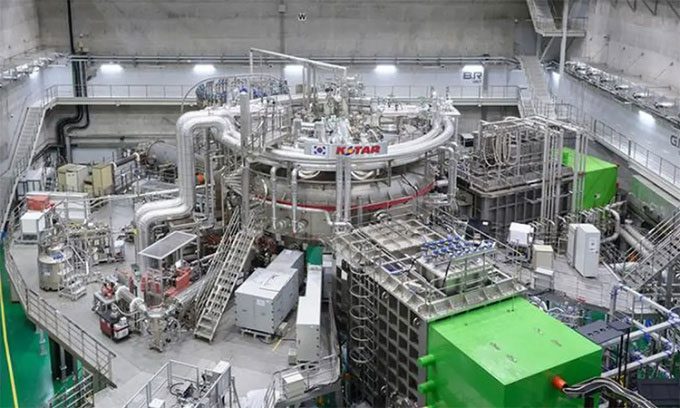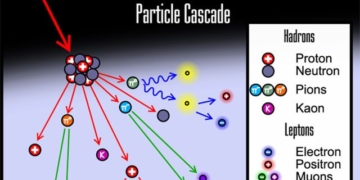Thanks to the use of a new tungsten divertor, the KSTAR fusion reactor successfully maintained a temperature of 100 million degrees Celsius for 48 seconds.
For the first time, the Korean Superconducting Tokamak Advanced Research (KSTAR) reactor, developed by the Korea Institute of Fusion Energy (KFE), achieved a temperature of 100 million degrees Celsius. This milestone occurred during experiments conducted from December 2023 to February 2024, marking a new record for the KSTAR project.

KSTAR fusion reactor of South Korea. (Photo: KFE).
KSTAR successfully maintained a temperature of 100 million degrees Celsius for 48 seconds. In comparison, the core temperature of the Sun is around 15 million degrees Celsius. Additionally, the reactor sustained high confinement mode (H-mode) for over 100 seconds. H-mode is an advanced operational state in magnetic confinement fusion that ensures stable plasma conditions.
Nuclear fusion mimics the processes that produce light and heat in stars. This process involves the fusion of hydrogen nuclei and other light elements to release immense amounts of energy. Experts hope to harness fusion reactors to generate an infinite, carbon-free source of electricity.
According to the National Research Council of Science and Technology of South Korea (NST), developing technology capable of maintaining high temperatures and high-density plasma for efficient long-term fusion reactions is extremely important. NST stated that the secret behind these significant achievements is the tungsten divertor. This crucial component at the bottom of the vacuum vessel in magnetic fusion devices plays a key role in expelling exhaust and impurities from the reactor while withstanding high surface heat loads.
The KSTAR team switched from using carbon to tungsten in the divertor. Tungsten has the highest melting point among metals. The KSTAR’s success in maintaining H-mode for extended periods is largely attributed to this upgrade. “Compared to previous carbon divertors, the new tungsten divertor only experienced a 25% increase in surface temperature under similar heat loads. This provides significant benefits for high-energy thermal pulse operations,” NST explained.
The success of the tungsten divertor may provide valuable data for the International Thermonuclear Experimental Reactor (ITER) project. ITER is a $21.5 billion international fusion mega-project currently being developed in France with participation from dozens of countries, including South Korea, China, the United States, EU nations, and Russia. ITER is expected to achieve plasma state for the first time in 2025 and begin operations in 2035. Tungsten will be used in the divertor of this reactor.





















































